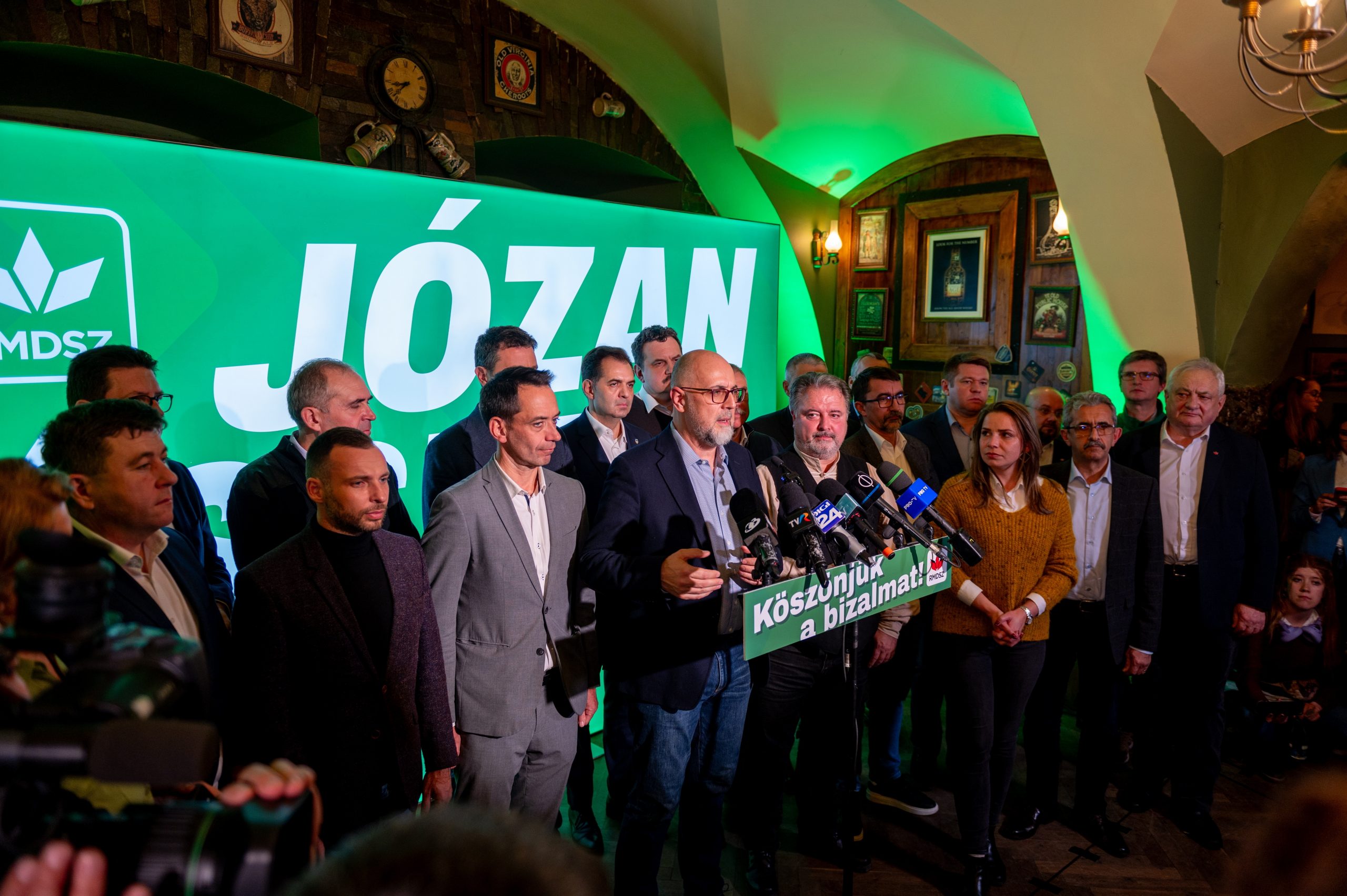
RMDSZ president Hunor Kelemen is convinced that he has achieved a better result in the presidential election than the exit poll data.Continue reading

The Democratic Alliance of Hungarians in Romania (RMDSZ) achieved a magnificent result in the parliamentary elections. However, the atmosphere of political upheaval has created a completely new starting position that promises little good for the Hungarian minority.
After the parliamentary elections on Sunday, Romania presents itself as an equation with three unknowns. While it was assumed before the first round of the presidential election that the country’s political arithmetic would remain the same despite the strengthening of the nationalist parties, the current governing parties, the Social Democrats (PSD) and the National Liberals (PNL), have to consider a new variable. In addition to the previously known Alliance for the Union of Romanians (AUR) and S.O.S. Romania, another party is strengthening the rallying point of chauvinist forces. This is the Party of Young People (POT), a political formation founded in 2023, that only became visible through its support for the surprise winner of the first round of the presidential election.

Diana Șoșoacă, leader of the S.O.S. Romania party. Photo: multimedia.europarl.europa.eu
In the two chambers of the Bucharest parliament, a political bloc is thus constituted that can claim a third of the seats each and can justifiably be described as ‘far-right.’
The public mega-wedding of AUR party leader George Simion, an obvious reference to the marriage of fascist leader Zelea Codreanu in 1925, the omnipresence of Orthodox clergymen as election workers and main protagonists of political provocations, the mystically veiled discourse of POT leader Anamaria Gavrilă are deliberate allusions to the “Iron Guard,” the Romanian Nazis. Even after the Second World War, their toxic legacy was never the subject of a serious reappraisal. Many henchmen of the “Guard” were quietly integrated into the communist domestic secret services. Their bloody handiwork, which had previously targeted national minorities and political opponents, was now directed at the “class enemy,” regardless of ethnicity, in the spirit of internationalism. The nationalist mania of the communist dictator Nicolae Ceaușescu created the breeding ground for the emergence of a toxic ideology whose preferred victims are still ethnic Hungarians, and after a relatively short break in connection with Romania’s accession to the EU, is once again celebrating a happy birthday.

Election posters in Cluj-Napoca. Photo: MTI/Kiss Gábor
The RMDSZ leadership’s repeated warnings of a flare-up of hostility towards Hungary were dismissed as a tactical maneuver to mobilize its own electorate. If anything, Romanian political analysts spoke of a “folkloric side effect” of European integration, whose unstoppable progress was supposed to guarantee prosperity and equal rights for all citizens. Not only the established parties, but also political observers have to say goodbye to cherished certainties. Romania’s political system, characterized by the alternating economy of two party blocs and the belief in the irreversibility of the Euro-Atlantic orientation, may be a thing of the past. The RMDSZ was a reliable part of this system and hardly had the luxury of being ideologically thin-skinned.
Although the representative body of the Hungarians in Romania is a member of the European People’s Party, it has to take into account the diversity of Transylvanian-Hungarian society.
The undisputed lowest common denominator within the organization was and is the continued existence of its own language and culture, a concern that – to put it mildly – is not one of the EU’s priorities and can therefore only be guaranteed through active political participation, i.e. participation in government.

Călin Georgescu. Photo: Wikipedia
The first hurdle, the entry into parliament, was overcome by an unprecedentedly intensive election campaign. This time, the RMDSZ could not rely on the fact that the turnout of ethnic Hungarians is usually higher than that of the Romanian majority. The demographic decline of the Hungarian minority made a strong mobilization of voters inevitable anyway. The unexpectedly high turnout of ethnic Romanians, fueled by a well-oiled propaganda machine on social media, also had to be offset by an unprecedented effort on the part of Hungarian campaigners.
The result is impressive: The most votes cast for the RMDSZ in 20 years.
However, whether the Hungarian alliance can once again tip the scales in the Bucharest Parliament is questionable. The ambiguous statements made by Marcel Ciolacu, still leader of the Social Democrats, but also by some leading politicians of the larger governing party and election winner, suggest that contrary to earlier assurances, the exclusion of AUR participation in government is not a foregone conclusion.

Marcel Ciolacu. Photo: MTI/Baranyi Ildikó
The shrewd tactician Marcel Ciolacu can be expected to do a lot, including moving closer to the largest party in the nationalist bloc. His refusal to make a clear election recommendation for the runner-up in the presidential elections suggests that a victory for the nationalist newcomer Călin Georgescu could lead to a reorientation of the PSD. Elena Lasconi, the candidate of the Save Romania Union, a progressive party that received 12% of the vote, owes her relatively good performance not to her own person, but to the desire of most Romanians for a fundamental reform of the political system. Humanly speaking, the mobilization potential of the “sovereigntist” electorate in Romania is much stronger. If the Central Election Office confirms the result of the first round, nothing stands in the way of a victory for the nationalist candidate. This would also create a completely new situation for the RMDSZ:
Compromises with the nationalist parties are unthinkable, alliances across ideological divides may be necessary,
so that ethnic Hungarians can continue to benefit from the results of Romania’s EU integration.
Featured image: Facebook/Kelemen Hunor